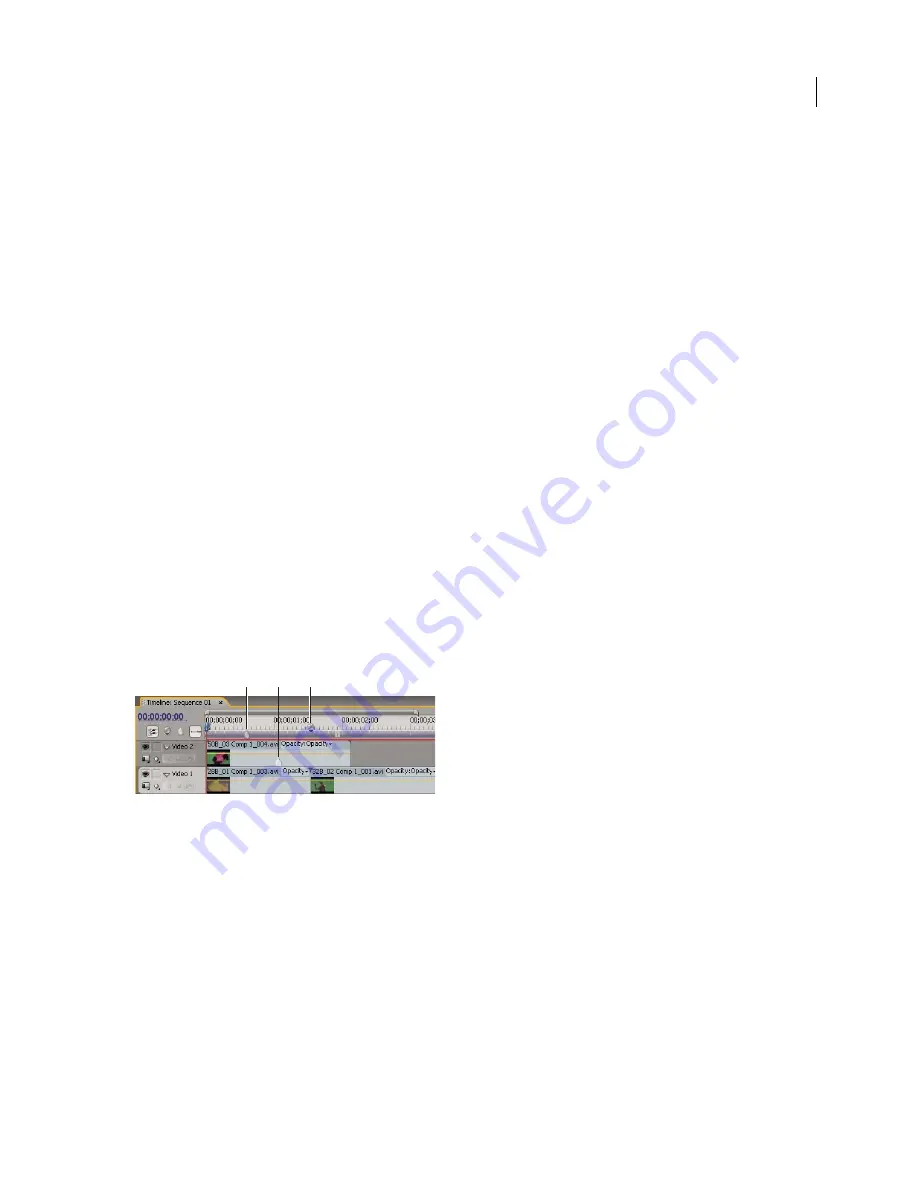
146
Chapter 7: Editing: Beyond the basics
Adobe Premiere Pro contains many tools for improving clips and refining edits. You can use them to add polish and
sophistication to your projects.
Using markers
Add markers
Markers indicate important points in time and help you position and arrange clips. You could use a marker to
identify an important action or sound in a sequence or clip. Markers are for reference only and do not alter the
video.
You can also use sequence markers to specify cue points for Adobe Flash Video movies, or to specify a URL to send
a user to a web page. Adobe Premiere Pro also provides Adobe Encore DVD markers that you can add to a sequence
to specify scenes, or a menu structure for sequences that you export to Encore. (See “
Add Encore chapter markers
”
on page 149.)
You can add markers to a sequence, to a source clip, or to an instance of a clip in a sequence. When you are marking
editing points, whether you add markers to a clip or sequence depends on your workflow.
Each sequence and each clip can individually contain up to 100 numbered markers (labeled from 0 to 99) and as
many unnumbered markers as you want.
Markers appear in the time ruler of the Source and Program monitors as small icons. Clip markers also become
icons within the clip as it appears in the Timeline panel, and sequence markers appear in the sequence’s time ruler.
Marker icons in the Timeline panel
A.
Sequence marker
B.
Clip marker
C.
Encore chapter marker
When setting markers (as with In and Out points), make sure that you’re working with the version of the clip you
want. Markers added to a source clip (opened from the Project panel) also appear in the clip when you add it to the
sequence. Changing a source clip’s markers doesn’t affect individual instances of the clip already in a sequence, or
vice versa. For a video on working with markers, see
www.adobe.com/go/vid0255
.
See also
“
Add comments, chapters, and links to sequence markers
” on page 148
Working with markers and cue points
A
B
C
April 1, 2008






























